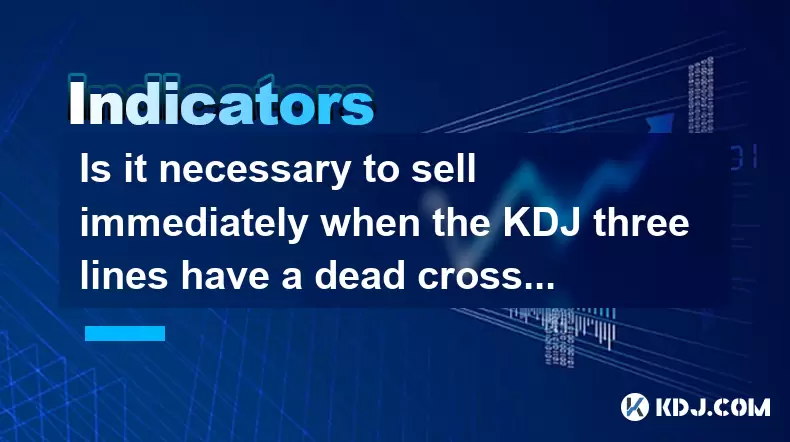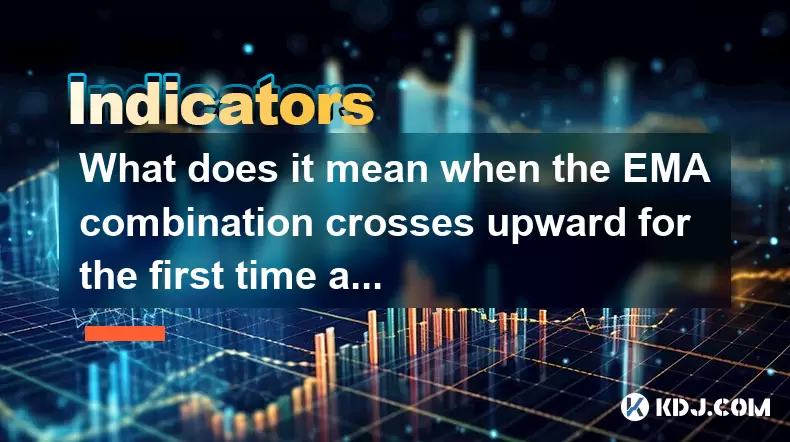-
 Bitcoin
Bitcoin $118600
0.36% -
 Ethereum
Ethereum $3855
1.06% -
 XRP
XRP $3.195
-0.09% -
 Tether USDt
Tether USDt $1.000
-0.04% -
 BNB
BNB $844.5
6.23% -
 Solana
Solana $191.3
2.83% -
 USDC
USDC $0.9997
-0.01% -
 Dogecoin
Dogecoin $0.2376
0.10% -
 TRON
TRON $0.3242
0.83% -
 Cardano
Cardano $0.8222
0.13% -
 Hyperliquid
Hyperliquid $45.26
6.53% -
 Sui
Sui $4.200
-2.56% -
 Stellar
Stellar $0.4336
-1.24% -
 Chainlink
Chainlink $18.86
0.28% -
 Hedera
Hedera $0.2796
-1.75% -
 Bitcoin Cash
Bitcoin Cash $583.3
-1.84% -
 Avalanche
Avalanche $27.06
8.09% -
 Litecoin
Litecoin $112.3
-1.16% -
 Toncoin
Toncoin $3.353
0.58% -
 UNUS SED LEO
UNUS SED LEO $8.968
-0.11% -
 Shiba Inu
Shiba Inu $0.00001395
-0.54% -
 Ethena USDe
Ethena USDe $1.001
-0.03% -
 Uniswap
Uniswap $10.76
0.69% -
 Polkadot
Polkadot $4.175
0.26% -
 Monero
Monero $326.7
1.07% -
 Bitget Token
Bitget Token $4.665
1.61% -
 Dai
Dai $0.9998
-0.02% -
 Pepe
Pepe $0.00001271
0.32% -
 Cronos
Cronos $0.1416
2.01% -
 Aave
Aave $299.3
1.15%
Is it necessary to sell immediately when the KDJ three lines have a dead cross at the weekly level?
A weekly KDJ dead cross may signal weakening momentum in crypto markets, but traders should confirm with RSI, MACD, volume, and on-chain data before acting.
Jul 28, 2025 at 12:57 pm

Understanding the KDJ Indicator in Cryptocurrency Trading
The KDJ indicator is a momentum oscillator widely used in cryptocurrency trading to identify potential overbought or oversold conditions. It consists of three lines: the %K line, the %D line, and the %J line. The %K line is the fastest and reflects the current price momentum. The %D line is a moving average of %K, providing a signal line. The %J line represents the divergence of %K from %D and is often more volatile. When these three lines intersect in a specific pattern, traders interpret them as potential trend reversals. A dead cross occurs when the %K line crosses below the %D line, and both are above the %J line, typically indicating bearish momentum.
In the context of cryptocurrency markets, which are highly volatile and sensitive to sentiment, the KDJ can generate frequent signals. However, the reliability of these signals depends heavily on the time frame used. The weekly chart offers a broader perspective, filtering out short-term noise. A dead cross on the weekly KDJ may suggest a significant shift in momentum, but it does not automatically mandate immediate action such as selling.
What Does a Weekly KDJ Dead Cross Signify?
A dead cross at the weekly level in the KDJ indicator often signals a potential bearish reversal after an extended uptrend. This pattern emerges when the %K line crosses downward through the %D line, and both are in the overbought region (typically above 80). The implication is that upward momentum is weakening and downward pressure may take over. However, this signal should not be interpreted in isolation.
Cryptocurrency price movements are influenced by multiple factors including macroeconomic trends, regulatory news, and on-chain activity. A KDJ dead cross on the weekly chart may coincide with a temporary pullback rather than the start of a prolonged downtrend. Therefore, traders should assess whether the cross occurs after a sharp rally, whether volume is declining, and whether other indicators confirm bearish divergence. Relying solely on the KDJ cross can lead to premature exits from potentially profitable positions.
How to Confirm the Validity of the Signal
Before reacting to a weekly KDJ dead cross, traders should perform a multi-layered confirmation process. The following steps can help validate the signal:
- Check the RSI (Relative Strength Index): If the RSI is also showing bearish divergence or entering the overbought zone (above 70), it strengthens the KDJ signal.
- Analyze MACD trends: A bearish MACD crossover on the weekly chart supports the idea of weakening momentum.
- Review price structure: Look for rejection at key resistance levels, such as previous all-time highs or Fibonacci extensions.
- Examine on-chain data: Metrics like exchange inflows, whale movements, and funding rates can provide context. For example, high exchange inflows may indicate profit-taking, reinforcing the bearish signal.
- Monitor trading volume: A drop in volume during the uptrend preceding the cross suggests lack of conviction, increasing the likelihood of a reversal.
These confirmations help differentiate between a temporary correction and a structural bearish shift.
Practical Steps to Respond to a Weekly KDJ Dead Cross
When a dead cross appears on the weekly KDJ, immediate selling is not the only or necessarily the best response. Traders can adopt a more nuanced approach:
- Reduce position size gradually: Instead of selling all holdings at once, consider selling a portion (e.g., 30–50%) to lock in profits while maintaining exposure.
- Set trailing stop-loss orders: Use technical levels such as recent swing lows or moving averages (e.g., 50-week or 200-week MA) as dynamic exit points.
- Shift to stablecoins or low-correlation assets: Move part of the portfolio into USDT or DAI to preserve capital without fully exiting the market.
- Wait for price confirmation: Observe whether the price breaks below key support levels with strong volume. A confirmed breakdown increases the validity of the KDJ signal.
- Avoid emotional trading: Do not react impulsively based on a single indicator, especially in crypto markets where volatility can trigger false signals.
This measured response allows traders to protect gains while remaining adaptable to changing market conditions.
Common Misinterpretations of KDJ Signals
Many traders misinterpret the KDJ indicator due to its sensitivity and tendency to generate false signals in trending markets. One common mistake is treating every dead cross as a sell signal, regardless of context. In strong bull markets, the KDJ can remain in overbought territory for extended periods, and dead crosses may be followed by renewed upward momentum.
Another error is ignoring the divergence between price and the KDJ lines. For example, if the price makes a new high but the KDJ fails to surpass its previous peak, this bearish divergence is more significant than a simple cross. Conversely, a dead cross occurring after a prolonged downtrend may signal exhaustion rather than continuation.
Additionally, traders often overlook the smoothing parameters of the KDJ. Default settings (9,3,3) may not suit all cryptocurrencies. Adjusting these based on asset volatility can improve signal accuracy. Backtesting the KDJ strategy on historical data for a specific coin (e.g., BTC or ETH) can reveal its effectiveness under different market regimes.
Frequently Asked Questions
Q: Can the KDJ indicator be used effectively on low-cap altcoins?
Yes, but with caution. Low-cap altcoins often exhibit erratic price movements and low liquidity, which can cause the KDJ to generate frequent false signals. It is advisable to combine KDJ analysis with volume indicators and on-chain data to improve reliability.
Q: What are the default KDJ settings, and should I change them for weekly analysis?
The default settings are typically 9 periods for %K, 3 for %D, and 3 for %J. For weekly charts, some traders extend the %K period to 14 or 21 to reduce noise. Adjustments should be tested via backtesting on the specific asset.
Q: How long should I wait before acting on a weekly KDJ dead cross?
There is no fixed duration. Monitor the next 1–2 weekly candles. If the price closes below the cross week’s low and volume increases, the signal gains strength. Patience allows for confirmation without missing major moves.
Q: Does a weekly KDJ dead cross always lead to a downtrend?
No. In strong bull markets, such crosses can mark temporary pullbacks before the trend resumes. Always assess the broader market structure and confirm with other tools before concluding a trend reversal.
Disclaimer:info@kdj.com
The information provided is not trading advice. kdj.com does not assume any responsibility for any investments made based on the information provided in this article. Cryptocurrencies are highly volatile and it is highly recommended that you invest with caution after thorough research!
If you believe that the content used on this website infringes your copyright, please contact us immediately (info@kdj.com) and we will delete it promptly.
- Crypto Investments, Dogecoin Substitutes, and Wealthy Returns: Navigating the Meme Coin Mania and Beyond
- 2025-07-29 00:30:13
- Week Review: July 21 - July 27 - Crypto, AI, and Trade Deals, Oh My!
- 2025-07-29 00:30:13
- Bitcoin, Gold, and Debt Hedges: A New Yorker's Take
- 2025-07-29 00:50:12
- Bitcoin, Japan, Metaplanet: A New Era of Corporate Crypto Adoption?
- 2025-07-29 00:50:12
- Bitcoin Bonanza in Japan: Metaplanet Leads the Charge
- 2025-07-29 00:55:23
- Bitcoin, Merger, and ProCap Financial: A New Era for Crypto in Traditional Finance
- 2025-07-29 00:55:23
Related knowledge

What does it mean when the EMA combination crosses upward for the first time after sideways trading?
Jul 28,2025 at 03:43pm
Understanding the EMA and Its Role in Technical AnalysisThe Exponential Moving Average (EMA) is a widely used technical indicator in cryptocurrency tr...

What signal does the ROC send when it rises rapidly from a low level and breaks through the zero axis?
Jul 27,2025 at 10:15am
Understanding the Rate of Change (ROC) IndicatorThe Rate of Change (ROC) is a momentum-based oscillator used in technical analysis to measure the perc...

What does it mean when the price breaks through the double bottom neckline and the moving averages are arranged in a bullish pattern?
Jul 28,2025 at 10:57am
Understanding the Double Bottom PatternThe double bottom is a widely recognized reversal chart pattern in technical analysis, particularly within the ...

What signal does the DMA fast line cross the slow line above the zero axis?
Jul 28,2025 at 05:42am
Understanding the DMA Indicator and Its ComponentsThe DMA (Difference of Moving Averages) indicator is a technical analysis tool used in cryptocurrenc...

What does it mean that the rebound is blocked after the moving average is arranged in a short position for the first time?
Jul 26,2025 at 10:51am
Understanding the Short-Term Moving Average ConfigurationWhen traders refer to a 'short position arrangement' in moving averages, they are describing ...

What does it mean that the ZIGZAG low point is raised and the high point breaks through the previous peak?
Jul 28,2025 at 03:28am
Understanding the ZIGZAG Indicator in Cryptocurrency TradingThe ZIGZAG indicator is a technical analysis tool widely used in cryptocurrency trading to...

What does it mean when the EMA combination crosses upward for the first time after sideways trading?
Jul 28,2025 at 03:43pm
Understanding the EMA and Its Role in Technical AnalysisThe Exponential Moving Average (EMA) is a widely used technical indicator in cryptocurrency tr...

What signal does the ROC send when it rises rapidly from a low level and breaks through the zero axis?
Jul 27,2025 at 10:15am
Understanding the Rate of Change (ROC) IndicatorThe Rate of Change (ROC) is a momentum-based oscillator used in technical analysis to measure the perc...

What does it mean when the price breaks through the double bottom neckline and the moving averages are arranged in a bullish pattern?
Jul 28,2025 at 10:57am
Understanding the Double Bottom PatternThe double bottom is a widely recognized reversal chart pattern in technical analysis, particularly within the ...

What signal does the DMA fast line cross the slow line above the zero axis?
Jul 28,2025 at 05:42am
Understanding the DMA Indicator and Its ComponentsThe DMA (Difference of Moving Averages) indicator is a technical analysis tool used in cryptocurrenc...

What does it mean that the rebound is blocked after the moving average is arranged in a short position for the first time?
Jul 26,2025 at 10:51am
Understanding the Short-Term Moving Average ConfigurationWhen traders refer to a 'short position arrangement' in moving averages, they are describing ...

What does it mean that the ZIGZAG low point is raised and the high point breaks through the previous peak?
Jul 28,2025 at 03:28am
Understanding the ZIGZAG Indicator in Cryptocurrency TradingThe ZIGZAG indicator is a technical analysis tool widely used in cryptocurrency trading to...
See all articles

























































































